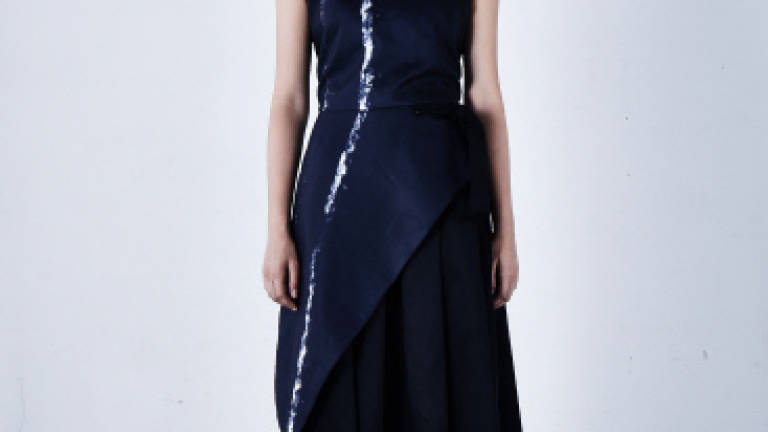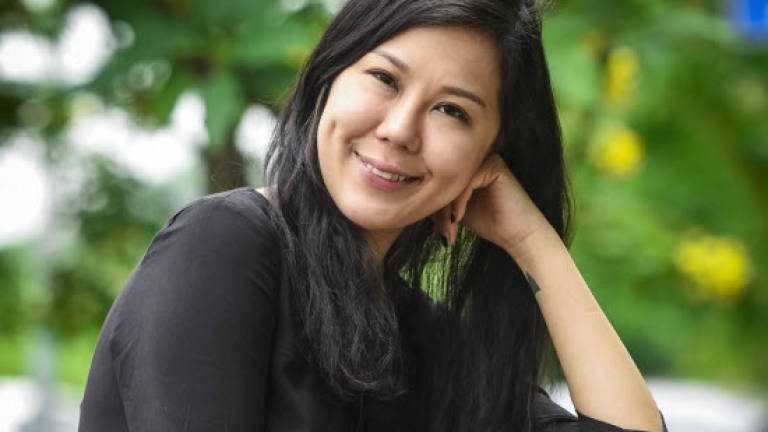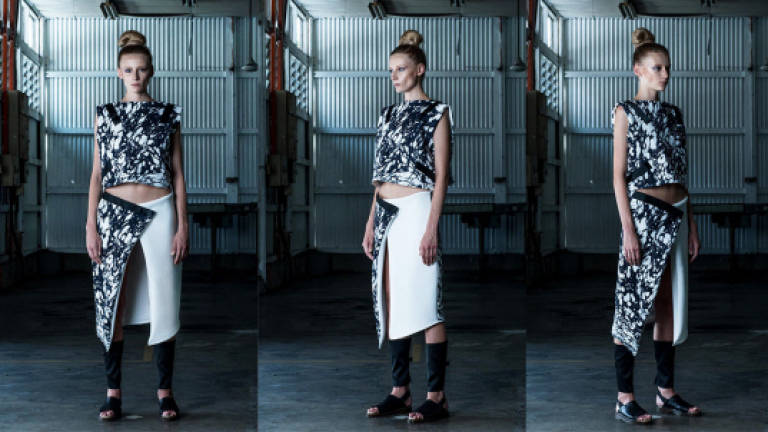A monochrome jewel



WHEN other children were busy playing seesaw and swings at the playground, Pearly Wong was playing with fabrics and mannequins at her parents’ kids’ apparel company. Albeit unconventional, this childhood experience played a role in determining her future as a fashion designer.
“I think I have always wanted to dabble in the creative industry. It could have been anything actually, but I chose fashion because I knew it was something that I could fall back on. I have seen my parents do it and they did it successfully, so it motivated me to pick fashion,” explained the Fashion Institute of Technology graduate.
After launching her eponymous label in 2012, she went on to make waves in the local and international fashion markets. In just two years, her clothes are now stocked in Singapore, Hong Kong, China, London and Berlin. She has also participated in Mercedes-Benz Fashion Week Berlin 2015 and New Zealand Fashion Week 2016.
In Pearly Wong, one can find unique, wearable and ethically conscious handmade clothing. The edgy aesthetic extends to the colour choice too, as the label’s DNA is inherently black and white.
If you’re asked to sum up your label in a sentence, it’ll be...
Multifunctional clothes with geometric shapes. You mentioned that Pearly Wong uses sustainable practices.
Can you elaborate on this?
The reason I like to make multifunctional clothes is to elongate the life cycle of the clothing. This way, you can wear it from summer to winter. Additionally, geometric shape is a recurring feature in my collections as it uses all parts of the fabric and this prevents fabric wastage. These are just some efforts on how I contribute to the environment as a designer.
Since your debut, you have produced six collections. Comparing your first collection to the latest one, has there been any change in your designing style?
Oh, definitely. When I first started, I made a lot of avant garde jackets – big, bulky pieces that are made of leather and PVC. In my second year, however, I began to make more ready-to-wear pieces for the purpose of selling.
What do you enjoy the most about your job?
When someone recognises my clothes in a rack because they can see how the outfit is quintessentially me. My clothes are a part of my identity, hence it feels good when others see that too.
Was it difficult penetrating the overseas markets?
Yes, of course. You need to reach a certain standard before they acknowledge you as an international designer. Nevertheless, you can’t let this deter you. The first step is to take the plunge; put yourself out there, learn from those designers and develop yourself.
Can you tell us about some of the challenges that you faced when you ventured out of the country?
I feel like one of the main challenges that I had to come to terms with was the cultural difference in terms of workplace personalities. They work in a fast-paced and direct mode, whereas Malaysians are more relaxed. People abroad actually yell or scream at you to get things done, but there’s no hard feelings because it’s nothing personal.
In your opinion, what is the biggest difference between the local fashion consumers and the ones abroad?
What I noticed when I was overseas is that people there are more willing to spend to support their local designers, as opposed to here. I can’t pinpoint the exact reason for the difference in support, but maybe it’s due to lack of awareness. Hopefully, in years to come, Malaysians can grow to support more local designers.
Where do you see your label in 10 years?
I still see myself doing what I am doing now, but from being available in five countries, I’d like to see the label flourish in more countries. It’s mostly on the European side now and it’ll be great if I can expand to the United States. Since the latter is where I got my education from, I want to set up my label there too.
Any advice you’d give to aspiring designers?
I think it’s always good to be logical about your passion. You can be passionate about fashion design – in fact, I see a lot of people who live and breathe it – but if you don’t have a good financial background and a good business plan, then it’ll definitely be a struggle. Fashion designing is 70% business and 30% creativity.